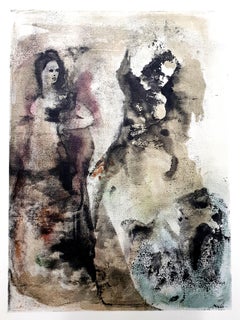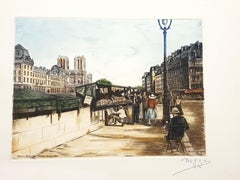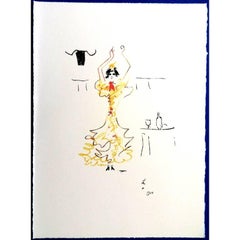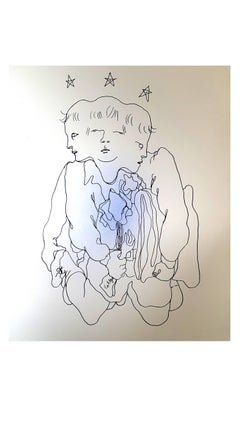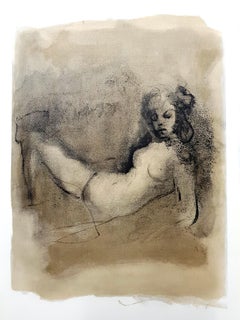Modern Nude Prints
The first decades of the 20th century were a period of artistic upheaval, with modern art movements including Cubism, Surrealism, Futurism and Dadaism questioning centuries of traditional views of what art should be. Using abstraction, experimental forms and interdisciplinary techniques, painters, sculptors, photographers, printmakers and performance artists all pushed the boundaries of creative expression.
Major exhibitions, like the 1913 Armory Show in New York City — also known as the “International Exhibition of Modern Art,” in which works like the radically angular Nude Descending a Staircase by Marcel Duchamp caused a sensation — challenged the perspective of viewers and critics and heralded the arrival of modern art in the United States. But the movement’s revolutionary spirit took shape in the 19th century.
The Industrial Revolution, which ushered in new technology and cultural conditions across the world, transformed art from something mostly commissioned by the wealthy or the church to work that responded to personal experiences. The Impressionist style emerged in 1860s France with artists like Claude Monet, Paul Cézanne and Edgar Degas quickly painting works that captured moments of light and urban life. Around the same time in England, the Pre-Raphaelites, like Edward Burne-Jones and Dante Gabriel Rossetti, borrowed from late medieval and early Renaissance art to imbue their art with symbolism and modern ideas of beauty.
Emerging from this disruption of the artistic status quo, modern art went further in rejecting conventions and embracing innovation. The bold legacy of leading modern artists Georges Braque, Pablo Picasso, Frida Kahlo, Salvador Dalí, Henri Matisse, Joan Miró, Marc Chagall, Piet Mondrian and many others continues to inform visual culture today.
Find a collection of modern paintings, sculptures, prints and other fine art on 1stDibs.
1960s Modern Nude Prints
Lithograph
1930s Modern Nude Prints
Etching
1940s Modern Nude Prints
Etching
1960s Modern Nude Prints
Lithograph
1930s Modern Nude Prints
Lithograph
1960s Modern Nude Prints
Lithograph
1980s Modern Nude Prints
Lithograph
1960s Modern Nude Prints
Lithograph
1960s Modern Nude Prints
Lithograph
1960s Modern Nude Prints
Lithograph
1960s Modern Nude Prints
Lithograph
1970s Modern Nude Prints
Lithograph
1930s Modern Nude Prints
Etching
1930s Modern Nude Prints
Etching
1930s Modern Nude Prints
Etching
1980s Modern Nude Prints
Lithograph
1960s Modern Nude Prints
Lithograph
1930s Modern Nude Prints
Etching
1930s Modern Nude Prints
Etching
1980s Modern Nude Prints
Lithograph
1920s Modern Nude Prints
Etching
1940s Modern Nude Prints
Etching
1930s Modern Nude Prints
Etching
Early 1900s Modern Nude Prints
Etching, Drypoint
1960s Modern Nude Prints
Etching
1930s Modern Nude Prints
Etching
Mid-20th Century Modern Nude Prints
Lithograph
Mid-20th Century Modern Nude Prints
Lithograph
Mid-20th Century Modern Nude Prints
Etching
Mid-20th Century Modern Nude Prints
Lithograph
